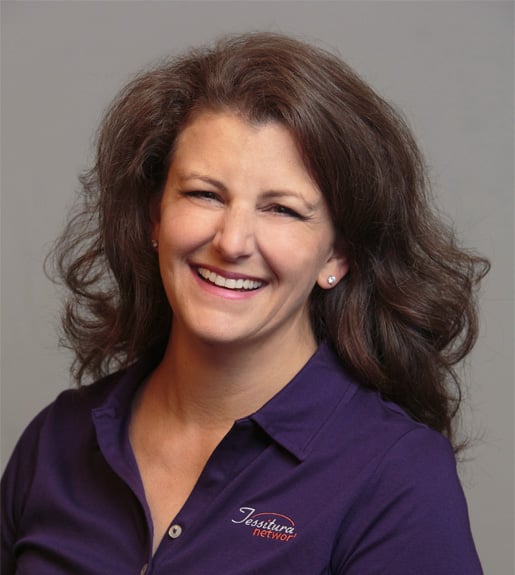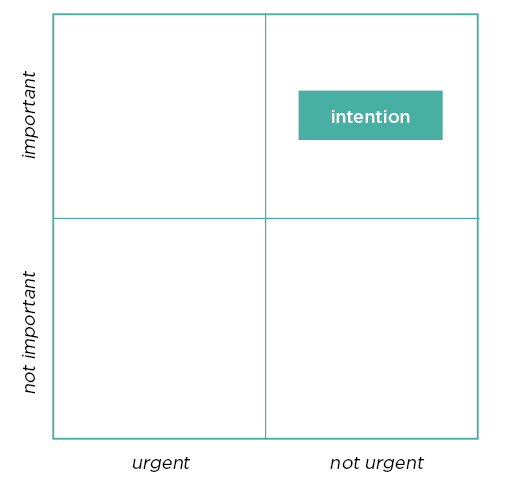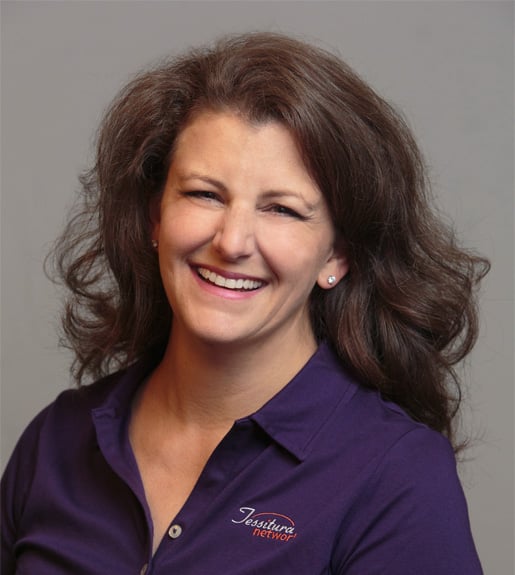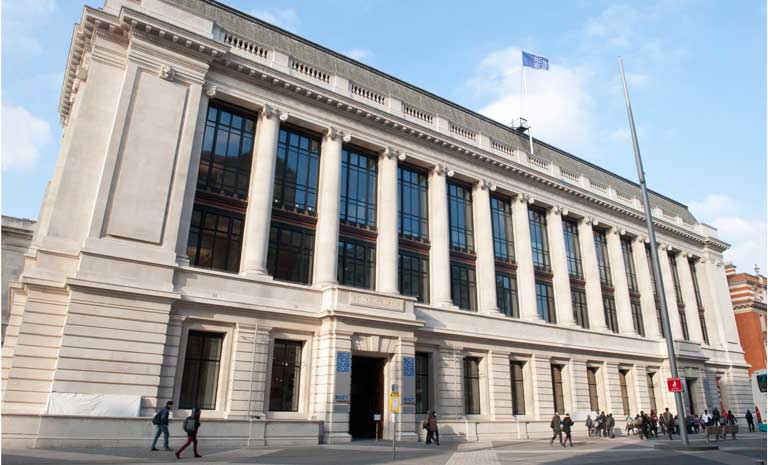Arts and Culture
Business Strategy
Article
Insights & Innovation
6b43d0f2-dcb3-4278-9499-ab84a1922a70
5 min
https://edge.sitecorecloud.io/tessiturane75c3-tessituraneee12-development-6640/media/Images/Stock-Photography/business-computer-desk-768x465.jpg?h=465&iar=0&w=768
In the final part of this series, we examine intention — sustaining conscious thought over time.
The Value of Everything, Part 4

Chief Strategy Officer, Tessitura Network
The Value of Everything, Part 4
2/18/2019
5 min
Now it’s time to talk about intention.
If you’re not sure what I’m talking about, start at the beginning of this four-part series.
We have defined our everything and have taken inventory. Now we reach the crux of our project: intention.
Another way to think about intention is your goals, your objectives — whatever it is you want to achieve daily, weekly, and beyond. So let’s do one last self-assessment.
take the third self-Assessment >

.
.
.
.
All set? Now let’s look at what these two ends of the spectrum signify.

Apathy might be a rough word to hear. You might also think of this side of the scale as autopilot or indifference. Phoning it in. Coasting. Complacency.
It might also sound like: “We’ve always done it this way.” Doing something out of habit — not with intention.
On the other side of the scales, ambition is filled with purpose. Every project has a hoped-for outcome.
With that in mind, I’d like to explore the meaning of intention now.
Intention is conscious thought over time.
Intention is conscious thought over time.
Think of conscious thought here as a new year’s resolution. You’ve spent a lot of time thinking about what you want from the year ahead. On January 1, you announce your intention of reaching a goal you’ve set for yourself. Maybe that goal is learning a new skill, or taking time to make art or practice an instrument.
The trouble with intention, though, is that it diminishes over time.
Let’s think of this on an institutional level. After months of effort and careful thought, an organization reveals a strategic plan. They have exciting goals, and a plan to reach them within five years. Staff are excited to get started. The momentum keeps up, for a while.
And then, urgent projects get in the way. Staff turnover starts to happens. A little of the zeal is lost. As time passes, the public moves on to other causes and concerns. And intention tails off.
How can we get to a new paradigm, one full of ambition and aspiration, fueled by creativity and innovation, carried with momentum?
Intention is conscious thought sustained over time. It’s easy to have intention at the beginning of a new year, or when you’re just beginning to act on a new strategic plan. What's harder is sustaining that intention over weeks and months.
Acknowledging that reality, how can we get to a new paradigm where our ambition and creativity continue to carry us forward?
Priority.
Remember our Eisenhower Matrix from Part 3?
The lower areas are your “everything” — the filler, the noise, the distractions.
That upper right quadrant — important, non-urgent work — is where I encourage you to focus.

Where do you need to concentrate?
Bring together your three scores from information, inventory, and intention. Why did last week at your job turn out like it did? Do you need to increase the amount of information you’re working with? Do you need to address your inventory of stuff? Do you need more intention?
As you went through the reflections over the course of this series, what struck you? That’s the area in which you need to focus.
The Value of Everything: Conclusions
Let’s summarize what we’ve done in this series. You’ve looked at three elements of your work, starting with information and how you manage it. You reflected on intention as the lens through with you consider information. And you took inventory of tasks which you chose to devote attention to last week.
This is your own personal cycle of decision making.
As arts and culture professionals, we should be aiming to master awareness of these things: the pieces of information flowing around us, their priority, and their ultimate purpose for the organizations we work for. If we can achieve that, then we have truly begun to understand the value of everything in a meaningful way.
* * *
This is the conclusion of a four-part series.

Erin Lively Koppel
Chief Strategy Officer
Tessitura Network
Topics
Arts & Culture
/Business Strategy

Superpowers of Observation | Andrew Recinos
Arts & Culture / Museums
How a clever museum exec looked up from the numbers and saw the story of the solution.

Planning for High-Volume On-Sales (The Donut Problem)
Arts & Culture / Business Strategy / Customer Service / Digital / IT & Systems / Technology / Ticketing & Admissions
Kristin Darrow offers her advice for managing a large ticket on-sale where demand outstrips supply, while maintaining a good customer experience throughout

Des Moines Performing Arts | Success Story
Digital / Business Strategy / IT & Systems / Presenting & Performance / Theatre / Ticketing & Admissions
Denise Smithson Green describes how Des Moines Performing Arts achieved a record on-sale for Hamilton